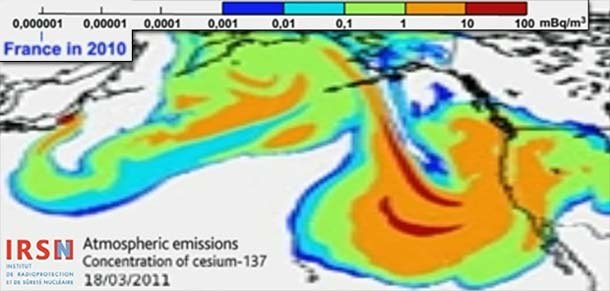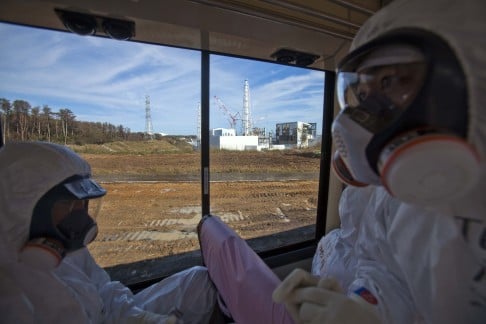- Details
- Parent Category: Health & Environment
- Category: Radiation
Researchers have found an imbalance in the brain chemistry of young people addicted to smartphones and the internet, according to a study presented today at the annual meeting of the Radiological Society of North America (RSNA).
According to a recent Pew Research Center study, 46 percent of Americans say they could not live without their smartphones. While this sentiment is clearly hyperbole, more and more people are becoming increasingly dependent on smartphones and other portable electronic devices for news, information, games, and even the occasional phone call.
Along with a growing concern that young people, in particular, may be spending too much time staring into their phones instead of interacting with others, come questions as to the immediate effects on the brain and the possible long-term consequences of such habits.
Hyung Suk Seo, M.D., professor of neuroradiology at Korea University in Seoul, South Korea, and colleagues used magnetic resonance spectroscopy (MRS) to gain unique insight into the brains of smartphone- and internet-addicted teenagers. MRS is a type of MRI that measures the brain's chemical composition.
The study involved 19 young people (mean age 15.5, 9 males) diagnosed with internet or smartphone addiction and 19 gender- and age-matched healthy controls. Twelve of the addicted youth received nine weeks of cognitive behavioral therapy, modified from a cognitive therapy program for gaming addiction, as part of the study.
Researchers used standardized internet and smartphone addiction tests to measure the severity of internet addiction. Questions focused on the extent to which internet and smartphone use affects daily routines, social life, productivity, sleeping patterns and feelings.
"The higher the score, the more severe the addiction," Dr. Seo said.
Dr. Seo reported that the addicted teenagers had significantly higher scores in depression, anxiety, insomnia severity and impulsivity.
The researchers performed MRS exams on the addicted youth prior to and following behavioral therapy and a single MRS study on the control patients to measure levels of gamma aminobutyric acid, or GABA, a neurotransmitter in the brain that inhibits or slows down brain signals, and glutamate-glutamine (Glx), a neurotransmitter that causes neurons to become more electrically excited. Previous studies have found GABA to be involved in vision and motor control and the regulation of various brain functions, including anxiety.
The results of the MRS revealed that, compared to the healthy controls, the ratio of GABA to Glx was significantly increased in the anterior cingulate cortex of smartphone- and internet-addicted youth prior to therapy.
Dr. Seo said the ratios of GABA to creatine and GABA to glutamate were significantly correlated to clinical scales of internet and smartphone addictions, depression and anxiety.
Having too much GABA can result in a number of side effects, including drowsiness and anxiety.
More study is needed to understand the clinical implications of the findings, but Dr. Seo believes that increased GABA in the anterior cingulate gyrus in internet and smartphone addiction may be related to the functional loss of integration and regulation of processing in the cognitive and emotional neural network.
The good news is GABA to Glx ratios in the addicted youth significantly decreased or normalized after cognitive behavioral therapy.
"The increased GABA levels and disrupted balance between GABA and glutamate in the anterior cingulate cortex may contribute to our understanding the pathophysiology of and treatment for addictions," Dr. Seo said.
Story Source:
Materials provided by Radiological Society of North America.
- Details
- Parent Category: Health & Environment
- Category: Radiation
Discovery that soil below a slide was contaminated fans fears for children
Extremely high levels of radiation have been discovered in a playground in Tokyo, officials said yesterday, fanning fears for the health of children in the area.
Soil underneath a slide at the park in the northwest of the Japanese capital showed radiation readings of up to 480 microsieverts per hour, the local administrative office said.
Anyone directly exposed to this level would absorb in two hours the maximum dose of radiation Japan recommends in a year.
"Many children play in the park daily, so the ward office should explain the situation," Kyodo News quoted a 62-year-old local woman as saying.
The radiation level is over 2,000 times that at which the national government requires soil cleaning in areas around the Fukushima Daiichi nuclear plant, where reactors melted down after the March 2011 tsunami.
That standard, however, is for measurements taken at 0.5 to 1.0 metre above ground, while officials in Tokyo's Toshima ward checked the ground itself.
Officials were made aware of the contamination after a local resident reported it on Monday and say they do not think it is connected to the disaster at Fukushima. "Because the area in which we detect radioactivity is very limited, and readings in surrounding parts are normal, we suspect radioactive materials of some kind are buried there," local mayor Yukio Takano said in a statement.
The park was built in 2013, two years after the Fukushima nuclear crisis, a local official said, on what was previously a parking lot for Tokyo's sanitation department. Top soil at the lot was replaced before the land was turned into a park, said the Toshima official.
The park had been sealed, and Toshima ward was discussing with experts how to approach the problem, she added.
Many families in eastern Japan continue to survey the levels of radioactive contamination around their houses, distrustful of government assurances that most places had not been affected by the Fukushima nuclear meltdown.
Such efforts have led some people to discover radioactive materials that had been dumped in their neighbourhoods.
The park incident came days after a small drone showing traces of radioactivity was found on the roof of the prime minister's official residence.
- Details
- Parent Category: Health & Environment
- Category: Radiation
Harry Miley, Pacific Northwest National Laboratory in Richland, Washington, Mar 7, 2014 (emphasis added): We’re surrounded by souvenirs of scientific achievement here in the National Security Building Showcase lobby. Each one of these items tells a story of scientists working quietly on projects of societal impact. This yellow thing you see behind me is an aerosol sample embedded in a filter… but this filter is unique. It was taken here a few days after the earthquake, tsunami, and nuclear disasters in Japan, and contains radioactivity that allowed us to determine the nature of the release, the magnitude of the release, but most importantly that there will be no human health impacts in North America from that disaster… The Fukushima nuclear disaster… was not something we expected. We normally work on things of societal impact invisibly… But when the disaster occurred, the things we were doing suddenly became of national importance. You could hardly imagine anything more important. In fact, it was a matter of life and death. >> Watch the video here A colleague of Miley’s at Pacific Northwest National Laboratory, Ted Bowyer, spoke about the releases during a Comprehensive Nuclear-Test-Ban Treaty Organization (CTBTO) conference:
- 0:30 in – “I agree with everything that the previous speakers have said, especially the aspect that more work is necessary… We have a lot of work to do. I think we have a lot of questions that we need to answer, and there are a lot of people working on it. I also really thought it was very valuable to have this email exchange with the… other interested parties about events as they were unfolding in Japan. The accident as everyone knows was a terrible tragedy.”
- 3:30 in – Slide: Evidence of radionuclide released reached the Japanese IMS station within 2-3 days — First evidence of the plume hitting the United States came to PNNL’s experimental equipment about 1 day later (March 16)
- 4:30 in – “This is very amazing to me, having been working in the radioactive xenon monitoring field for about 17 years now. This was astounding to me… You can see background levels around 0.1 mBq/m3… Note that the peak concentration we saw was in the range of 45,000 mBq/m3 — so that is 450,000 times our background level. For me that’s astounding. We never have ever seen anything even close to that. So the concentrations went up and up and up every day, and so that was quite amazing to see this 7,000 kilometers away from the event… I only show some of the data here, but it actually persisted for weeks at very measurable levels, and filled the entire northern hemisphere and mixed into the southern hemisphere.”
- 12:00 in – “The xenon isotopic ratios appear to generally agree with the calculations. However, there is some uncertainty…We have a lot of work to do to try to understand whether there are calibration issues, whether there were physics here that we had not accounted for, etc. We do know that there are very high count rates at these detectors, which is similar to what you’d expect in an atmospheric detonation. On the other hand,the part Ididn’ttell you wasthe amount of xenon we saw was consistent with a one megaton atmospheric detonation — weobviouslywouldn’texpect tosee that high.But it was a huge amount.“
- Details
- Parent Category: Health & Environment
- Category: Radiation
Fukushima Radiation Has Spread Worldwide
We noted 2 days after the Japanese earthquake that radiation from Fukushima could end up on the West Coast of North America. And see this.
We started tracking the radioactive cesium released by Fukushima within weeks of the accident.
In fact, U.S. nuclear authorities were extremely worried about the West Coast getting hit by Fukushima radiation … but publicly said it was safe.
We reported that Fukushima radiation spread worldwide.
And we’ve documented for years that the failure to test the potentially high levels of radiation hitting North America is a scandal.
Sadly, we were right to be worried …
The Journal Environmental Science & Technology – published by the American Chemical Society –reported last year that airborne levels of radioactive cesium were raised by 100 to 1,000 times (what scientists describe as two to three “orders of magnitude“):
Before the FDNPP accident, average 137Cs levels were typically of 1 μBq m−3 in Central Europe and lower average values (<0.3 μBq m−3) were characteristic of northern, western and southern Europe.
***
During the passage of contaminated air masses from Fukushima, airborne 137Cs levels were globally enhanced by 2 to 3 orders of magnitude.
Indeed, even hot particles and nuclear core fragments from Fukushima were found to have traveled all the way to Europe.
The French government radiation agency – IRSN – released a video of Fukushima cesium hitting the West Coast of North America. EneNews displays a screenshot from the IRSN video, and quantifies the extreme cesium spikes:
- Cesium-137 levels in 2010: 0.000001 mBq/m³ of Cs-137 (blue writing)
- Cesium-137 levels in Mar. 2011: 1 to 10 mBq/m³ in Western U.S. (orange plume)
- Cs-137 levels increased 1,000,000 – 10,000,000 times after Fukushima

Levels on the West Coast were up to 500 times higher than estimated. Cesium levels from Fukushima were higher than expected worldwide, including in the arctic region of Europe:


Radioactive cesium bioaccumulates in large fish and animals.
The radioactive half life of cesium 137 is usually 30 years. But scientists at the Savannah River National Laboratory say that the cesium at Chernobyl will persist in the environment between 5 and 10 times longer – between 180 and 320 years.
And the Fukushima accident has pumped out some entirely new forms of radioactive materials … in “glassy spheres“, buckyballs, ball-like spheres, and bound to organic matter. Scientists don’t really know how long these new forms will last …

